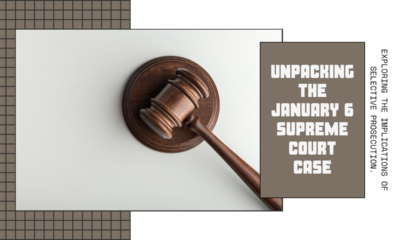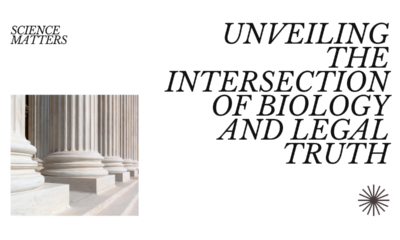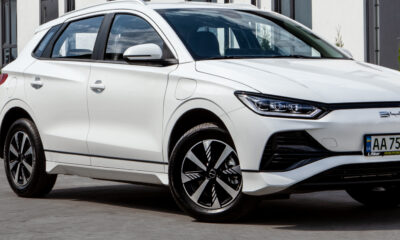Legislative
Green New Deal revisited
The Green New Deal is definitely a socialistic plan, as the chief of staff of its introducer avows. Here is how it would work.

Two and one-half months ago today, CNAV discussed the Green New Deal. CNAV judged the Green New Deal (download it here) a pathway to socialism, not a legitimate environmental remedy. At the time, we judged that Rep. Alexandria Ocasio-Cortez (D-N.Y.) included several throw-away provisions. These we expected her to scrap while pressing for specific changes in industry and transportation.
Green New Deal and not-so-extraneous provisions
But now her chief-of-staff, Saikat Chakrabarti, has avowed
that the Green New Deal always
had the intent of introducing socialism. (See here
and here.)
Mr. Chakrabarti granted an interview to Sam Ricketts, the “climate
director” for a very
obscure Presidential candidate, Jay Inslee. Candidate Inslee released
a 15,000-word Green New Deal plan of his own. Though Rep.
Ocasio-Cortez had called it “big enough” and “fast enough,”
Mr. Chakrabarti told Mr. Ricketts that his candidate’s plan would not go far enough! In fact he said,
The interesting thing about the Green New Deal is [that] it wasn’t originally a climate thing at all. Do you [really] think of it as a climate thing? [It is rather] a how-do-you-change-the-entire-economy thing.
In which case Rep. “AOC” would not scrap provisions like “paying people unable or unwilling to work.” Far from extraneous, they become central.
If Donald Trump were to propose a Green New Deal
This sounds like a radical thought experiment. Donald Trump caring about the environment? His detractors insist the thought boggles the mind. But convince him that a clean environment has value—intrinsic value—and he might indeed propose a plan to achieve it. Such a plan would not, of course, include things like “paying people unable or unwilling to work.” In Trump’s hands, such things would be extraneous, not to mention larcenous.
“Climate change” is not the only reason to change away from fossil fuels. All fossil-fuel engines emit acute poisons of one form or another. (The rumored “chemtrails” from high-flying airliners and air freighters might contain nothing more than pollutants. Those would be bad enough!) In addition, fossil fuels are scarce. Wars threaten from that scarcity. Anything that replaces or even supplements them is welcome.
The engineering details: ground-based solar, not space-based
In fact, Donald Trump probably would not need to propose, nor Congress enact, anything. A truly reasonable answer to the Green New Deal would need only one input from the federal government. Which is: to lease land long-term for ground-based solar farms.
Why ground-based? Because, sadly, Elon Musk, head of SpaceX and Tesla, has concluded that space-based solar power cannot work. The reason: one must convert sunlight to electricity, then to microwaves, then back to electricity on the ground. In the process, he says, one would lose 91 percent of the energy any satellites could collect. Better to convert sunlight to electricity on the ground, and store it against nightfall, inclement weather, and so forth.
The Hawaiian project
Mr. Musk might have a conflicting interest: he is always working on building better batteries. In fact a proof-of-concept project is well underway—in Hawaii. Last year (December) a new solar farm and battery array came on-line for the first time. At 28 MW for the solar cells and 100 MWh for the battery array, the Lāwa’i Solar and Energy Storage plant can supply 40 percent of peak power every evening. It occupies 155 acres of land and is the largest such facility in Hawaii.
Hawaii is the perfect candidate as the first society to switch to solar power and away from fossil fuels. Today Hawaii must import the Diesel fuel that keeps the lights on. Such imports cost a lot of money. Hawaii is tropical, so any solar farm will be far more efficient. Kaua’i is building another, slightly smaller facility on the Barking Sands Naval Base. They hope to have this on-line at the end of this year and get 70 percent of their electricity from the sun.
But what about the cars?
Hawaii will have to replace more than the Diesel fuel that runs the power plants. They must also replace the gasoline that powers their car and truck fleet. Furthermore they must replace the jet fuel for hopping from one island to another. Several companies are now eager to build the new cars, trucks, and even short-range airliners. Finding the “juice” will be the challenge. So Hawaii will give ground-based solar power its first true test. To meet it, all Hawaiians might need to collect the sun’s light from their rooftops. Considering the cost for electricity they now pay, they might find that worth doing.
If ground-based solar can succeed anywhere, it will succeed first in Hawaii. And if it can, many fewer ships will need to carry petroleum distillates to Hawaii.
The biggest Green New Deal challenge: aviation
Aviation—general and commercial—will present the greatest challenge to the goal of “total decarbonization.” Finding the “juice” need not present the challenge, especially if one allows small modular nuclear reactors. (Nuclear fuel will last far longer than will fossil fuels, and certainly long enough to wait for controlled fusion.) The challenge will come from building aircraft that can use electricity alone.
Only a dirigible can use the sun in real-time for power. Anyone having the time to travel by ship could travel by dirigible instead. But most people don’t have that kind of time. They want to get somewhere fast. So a modern society still needs to fly, especially overseas and between islands.
New electric aircraft designs
Electric aircraft do exist, however. This article highlights seven promising designs. All are single- or multi-motor propeller planes. They will replace jets on “feeder” and other short-range routes (335 miles or shorter).
Battery weight is the problem. Jet fuel carries 43 times as much energy per unit weight as the best batteries. That ratio must fall for battery-powered aircraft to be of any use.
For speed and range, nothing beats a jet today. But could that jet run on liquid hydrogen? Hydrogen can carry far more energy per unit weight than can jet fuel. The problem with hydrogen will be volume, not weight. Compress the fuel, and the fuel will still be lighter. So an airliner like the Boeing 787 could have the same range but carry more passengers and/or freight. (The 787 already has as much range—Great Semicircle range—as any airliner would need. It can reach any airport from any other airport, non-stop.)
How the reasonable Green New Deal world would look
We can now imagine a world that dispenses with fossil fuels, for whatever reasons.
Ground transport…
Contrary to the real plan of the Green New Deal, this world would still have free enterprise. For that reason, the low-duty vehicle fleet will have almost as much variety in 2050 as it has today. “Legacy” auto makers will either produce electric versions of their old standbys, or all-new models. Either that, or they will wither away. Driving ranges will come close to what’s nominal today. Of course, public charging stations will replace fueling stations in major cities and at highway rest areas. New towns will spring up along the most popular “back roads,” with charging stations at their centers.
Independent truckers will be the only ones to drive the new electric “semis.” The great trucking fleets (J. B. Hunt, Estes, Shafer, etc.) will robotize their trailers. The railroads, if they want to keep their intermodal business, will have to expand their tracks and accommodate these new trailers. But a place for independent truckers will always remain. By 2050, an electric “semi” will come with a sleeper cab. (Elon Musk has not added that feature yet.)
…and air transport
Airlines and air freight companies will fly two kinds of aircraft: electric on short routes, and hydrogen jets on long. The electric aircraft will only vaguely resemble today’s short-route planes, and will sport many propellers on each wing.
Hawaii will keep its tourist trade, but will be less important as a hub. In fact, the airlines will abandon hub-and-spoke route systems in favor of direct flights.
“Megalopolis USA,” the continuous cityscape from Boston to Washington, will at last see a major rail line upgrade. This will let Amtrak’s Acela train achieve—finally—the high speeds it promised. But this line will extend no further. Instead, Amtrak’s Northeast Regional and other trains will run a little faster than they do today (2019).
And if the Green New Deal is unreasonable…
But The Squad and Saikat Chakrabarti do not want such things to happen. They insist on a timeline of 2030. And that cannot happen with current technology or the likely pace of development.
Instead, the government will confine all citizens to small districts, and limit travel ranges to 250 miles or shorter. To travel any farther, a person will need a rail ticket. Eventually no one will have an automobile at all, unless that one is a:
- Law-enforcement officer,
- Active-duty military service member,
- Very Important Person, or
- Chauffeur to one.
Furthermore, the government will abolish single-family residences. All citizens will then live in mixed-use dwellings. Electric shuttle buses will then take them to and from railroad stations.
Secession of Alaska and Hawaii
Senator Mazie Hirono (D-Hawaii) will become Queen Mazie in 2037. The death of commercial aviation will isolate Hawaii, the only access to which will be by sailing ship. Reluctantly, Congress will grant Hawaii its independence. Senator Hirono will then announce the foundation of the House of Hirono in the mold of the House of Kalakaua. (Senator Hirono succeeded Daniel Akaka, who proposed something close to Hawaiian secession.)
Alaska similarly will be no more. It will change its name to Inuit Nunangat, or literally “Inuit lands” or, perhaps politically incorrectly, “Eskimoland.” The Inuit will revert their economy to a hunter-gatherer economy. The Iditarod Dog Sled Race will cease to run.
More to the point, all haole persons (and however the Inuit call whites in Alaska) will find themselves in immediate exile. Furthermore, their property will be forfeit.
Conclusion
These are the only things that make sense with the Green New Deal as AOC introduced it in February.
Accordingly, in 2020 (or in 2019 in New Jersey and Virginia), voters face a stark choice. Indeed the choice the voters have has never been more stark in history and could not be more stark. The choice is between freedom and tyranny, and progress and regress. And that progress or regress will be technological and economic, not theoretical.
Terry A. Hurlbut has been a student of politics, philosophy, and science for more than 35 years. He is a graduate of Yale College and has served as a physician-level laboratory administrator in a 250-bed community hospital. He also is a serious student of the Bible, is conversant in its two primary original languages, and has followed the creation-science movement closely since 1993.
-

 Executive2 days ago
Executive2 days agoJanuary 6 case comes down to selective prosecution
-

 Executive1 day ago
Executive1 day agoBiden ballot woes continue
-

 News2 days ago
News2 days agoRolling the Dice on Republicans: Has the Right Become Delusional?
-

 Executive1 day ago
Executive1 day agoWhy Fatal Police Shootings Aren’t Declining: Some Uncomfortable Facts
-

 Civilization1 day ago
Civilization1 day agoPresident Biden Must Not Encourage Illegal Mass Migration From Haiti
-

 Guest Columns1 day ago
Guest Columns1 day agoWhat Was Won in No Labels’ Crusade
-

 Constitution1 day ago
Constitution1 day agoEquality Under the Law and Conflicts of Interest in New York
-

 Civilization2 days ago
Civilization2 days agoBiology, the Supreme Court, and truth















[…] her full support behind “the squad” of outspoken Jew haters, […]
[…] See your erditor’s two treatments of the Green New […]